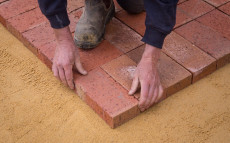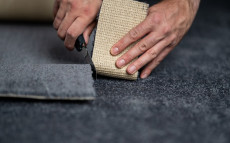- pathfindersAI
- Job Profile
Floor Layers, Except Carpet, Wood, and Hard Tiles
Summary
Floor Layers, Except Carpet, Wood, and Hard Tiles: A Career Pathway
What They Do
Floor layers, excluding those who specialize in carpet, wood, and hard tiles, play a pivotal role in the construction and renovation industries. These professionals are responsible for installing a wide variety of floor coverings, including but not limited to vinyl, linoleum, rubber, and other resilient floor materials. Their expertise ensures that residential, commercial, and industrial spaces are both functional and aesthetically pleasing. By transforming bare surfaces into finely finished floors, they contribute significantly to the overall ambience and usability of any space.
Job Responsibilities
The job responsibilities of floor layers extend beyond merely laying down floor coverings. Before installation, they meticulously prepare the subfloor by cleaning, leveling, and repairing any imperfections. Proper subfloor preparation is crucial for the durability and longevity of the flooring materials. They carefully measure and cut floor materials to fit the designated area, ensuring precision and accuracy. Floor layers also employ various adhesives and installation techniques, tailored to the specific type of flooring being installed. Post-installation, they may apply finish coats or sealants to enhance durability and appearance. Furthermore, they are often tasked with maintaining and repairing existing floors, which requires a keen eye for detail and thorough knowledge of flooring materials.
Essential Skills
Floor layers possess a unique blend of technical and soft skills. Technical skills include proficiency in using various tools and equipment such as floor rollers, cutters, and heat welders. Additionally, they must have a solid understanding of the properties and installation techniques of different flooring materials. Precision and manual dexterity are paramount, as even a minor oversight can compromise the entire flooring project. Beyond technical acumen, floor layers should exhibit strong problem-solving skills and be able to work effectively both independently and as part of a team. Good physical fitness and stamina are also essential, given the demanding nature of the job, which often involves prolonged periods of standing and physically intensive tasks.
Educational Pathways
Aspiring floor layers can embark on their career through a combination of formal education and hands-on training. While a high school diploma or equivalent is typically the minimum educational requirement, specialized courses in flooring technology offered by technical schools can provide a significant advantage. These programs cover various aspects of flooring installation, including subfloor preparation, material properties, and safety practices. Additionally, many floor layers begin their careers through apprenticeships, which offer valuable on-the-job training and mentorship from experienced professionals. Certification programs, such as those offered by the International Standards & Training Alliance (INSTALL), can further enhance a floor layer's credentials and employment prospects.
Career Prospects
The demand for skilled floor layers is expected to remain steady, driven by ongoing residential and commercial construction projects, as well as the need for renovation and refurbishments. Employment opportunities are available through a wide range of employers, including construction companies, flooring contractors, and home improvement retailers. With experience, floor layers can advance to supervisory roles, start their own flooring business, or specialize in high-demand areas such as sports flooring or healthcare facility installations. The median annual wage for floor layers, as of the latest data, is competitive, with opportunities for overtime and advancement further influencing earning potential.
Conclusion
In conclusion, a career as a floor layer, excluding those who specialize in carpet, wood, and hard tiles, offers a dynamic and fulfilling pathway for individuals with a penchant for hands-on work and keen attention to detail. This role not only contributes to the aesthetic and functional aspects of various spaces but also presents ample opportunities for career growth and development. By combining technical skills with practical experience, floor layers can carve out a rewarding profession in a vital and consistently evolving industry.
Video
Compensation
| State | Median Salary | Median Hourly | Positions |
|---|---|---|---|
| SC | 39,670 | 19.07 | 60 |
| SD | 46,580 | 22.40 | 90 |
| TN | 46,340 | 22.28 | 380 |
| TX | 40,810 | 19.62 | 1,150 |
| UT | 40,290 | 19.37 | 530 |
| VT | 47,750 | 22.96 | 60 |
| VA | 46,970 | 22.58 | 650 |
| WA | 48,750 | 23.44 | 1,360 |
| WI | 43,990 | 21.15 | 210 |
| AL | 46,620 | 22.41 | 170 |
| AZ | 43,630 | 20.98 | 530 |
| AR | 45,600 | 21.92 | 160 |
| CA | 59,430 | 28.57 | 6,240 |
| CO | 49,270 | 23.69 | 330 |
| CT | 47,120 | 22.65 | 60 |
| FL | 47,330 | 22.76 | 1,460 |
| GA | 43,800 | 21.06 | 460 |
| HI | 61,680 | 29.66 | 300 |
| ID | 48,350 | 23.25 | 300 |
| IL | 77,000 | 37.02 | 1,170 |
| IN | 31,480 | 15.13 | 580 |
| IA | 38,490 | 18.50 | 330 |
| KS | 38,010 | 18.28 | 190 |
| KY | 44,360 | 21.33 | 310 |
| LA | 45,050 | 21.66 | 120 |
| ME | 51,800 | 24.90 | 80 |
| MD | 46,720 | 22.46 | 430 |
| MA | 74,960 | 36.04 | 600 |
| MI | 47,770 | 22.96 | 720 |
| MN | 47,280 | 22.73 | 260 |
| MO | 57,470 | 27.63 | 840 |
| MT | 38,940 | 18.72 | 140 |
| NE | 36,690 | 17.64 | 140 |
| NV | 57,330 | 27.56 | 120 |
| NH | 58,520 | 28.13 | 30 |
| NJ | 84,240 | 40.50 | 660 |
| NM | 43,640 | 20.98 | 150 |
| NY | 65,420 | 31.45 | 900 |
| NC | 44,880 | 21.58 | 610 |
| ND | 44,500 | 21.40 | 100 |
| OH | 47,530 | 22.85 | 990 |
| OR | 51,340 | 24.68 | 450 |
| PA | 52,670 | 25.32 | 590 |
Similar Occupations
In this area you will find other occupations that are close to the one you were viewing in tasks, knowledge and work environment. If the primary job profile you are viewing isn't quite to your liking, take a look around and see what else is available.
Basic and Premium Accounts have more alternative occupations available than the Free account.

Brickmasons and Blockmasons - 47-2021.00
Brickmasons and Blockmasons construct and repair walls, floors, partitions, and other structures with brick, concrete blocks, and other masonry materials. They interpret blueprints, measure and cut materials, and apply mortar or adhesives to create sturdy, aesthetically pleasing surfaces.
-
$59,640/yr
Median Pay -
56,830
Number of Jobs

Carpet Installers - 47-2041.00
A carpet installer measures and prepares floor spaces, cuts carpeting to fit dimensions, and secures it using adhesives, staples, or tacks. They also ensure the carpet is properly stretched and fitted to avoid wrinkles and bubbles for a smooth, professional finish.
-
$47,520/yr
Median Pay -
15,560
Number of Jobs